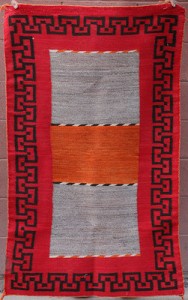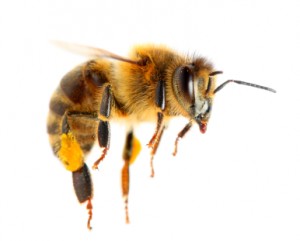MOOCs and Me – 1

Nothing’s changed.
As an adjunct professor at the University of Denver, I teach in University College (UCOL), the school’s professional and continuing education program. UCOL focuses on non-traditional students, especially people who have been out of school for some time and are returning to study for an advanced professional degree.
I teach at the Master’s level and most of my students are in their 30s and 40s. Many see the Master’s degree as a key to greater career opportunity. They’re mature and motivated. They’re focused on acquiring certified knowledge, not on growing up.
I teach my courses in two completely different formats: on campus and online. The on-campus courses meet one night a week. The online courses never meet at all – we interact with each other through a web-based electronic college.
I’ve taught on-campus courses off and on for many years. I know what I’m doing and I feel comfortable and confident in the classroom. On the other hand, when I started teaching online – two years ago – I felt very unsure of myself. Though I was very familiar with the technology, I didn’t know how to use it to teach effectively.
Two years later, I feel much more comfortable teaching through the web. In fact, in some ways, I prefer it. The major advantage is that I don’t have to be anywhere at any specific time. As long as I have an Internet connection, I can teach my class.
The same is true for my students. In my online classes, I typically have students in six to eight different states and two to three different countries. Through the magic of the web, I can potentially reach hundreds, even thousands of students.
And that brings us to MOOCs – the Massive Open Online Courses that are roiling college campuses across the country. MOOCs take some of some of our best professors — often from places like Stanford, MIT, and Harvard – put them in front of a camera and ask them to teach thousands of students across the web.
MOOCs are massive; some enroll 50,000 students or more. They’re open; anyone with an Internet tap can register. They’re also free. Yikes!
MOOCs challenge virtually everything we do in universities today. A fundamental problem of higher education is that it hasn’t increased productivity for 700 years or so. While every other industry has increased productivity and thus can offer more for less, higher education offers the same for more. Without productivity increases, tuition will always rise at least as fast as inflation.
MOOCs promise to change that. Put a great professor online and – presto! – we can educate the masses. We can also save a lot of money. Why should states pay millions to support brick-and-mortar campuses? Why should students spend thousands to attend schools with second-string faculty? Why indeed?
So, will MOOCs destroy academic life as we know it? Or will they be more like correspondence courses – an interesting niche but only a niche? As a teacher of MOOC-like courses, I do have an opinion. But, let’s talk about that tomorrow.
Cicadas and Prime Numbers
 Here in the United States, we’re suffering through a cicada plague. The insects lie dormant for 17 years, then dig themselves out of their little holes, mature, mate, lay eggs, and die. The little ones lie dormant for 17 years before repeating the process.
Here in the United States, we’re suffering through a cicada plague. The insects lie dormant for 17 years, then dig themselves out of their little holes, mature, mate, lay eggs, and die. The little ones lie dormant for 17 years before repeating the process.
When I read about the 17-year cycle, I thought to myself, “Hmmm… 17 is a prime number. I wonder if there’s any significance to that?” It turns out that it’s very significant. By coming out on a prime year, the cicadas avoid predators that arrive in two-, four- and eight-year cycles. Read more about it here.
Is Happiness Authentic?

Navajo or Rothko?
I’ve been worried about the word “authentic” recently. I just don’t understand what it means any more. In fact, I’m worried that it doesn’t mean anything.
Oh, I get what “authentic” means when applied to an object, particularly an art object or an antique. Let’s say, for instance, that you just bought an “authentic Navajo saddle blanket”. Presumably that means a Navajo wove the blanket in a traditional style. If a gringo had woven a similar blanket using traditional techniques, it wouldn’t be “authentically” Navajo.
What if a Navajo decides to become an abstract expressionist and weaves a blanket in the style of Mark Rothko? Is that still authentically Navajo? It’s an interesting comparison because – if you look at blankets as art – Navajos may well have been the first abstract expressionists. So is the saddle blanket depicted here authentically Navajo, or authentically abstract expressionist, or an authentic precursor to Rothko?
It gets even weirder as we apply “authentic” to people. Self-help enthusiasts tell me that I should be my “authentic” self. Well, OK … but who else would I be? Is my “authentic” self somehow different from the self that I’ve grown so comfortable with over the years? Is it somehow trimmed or edited?
And how does my “authentic” self relate to reality? I’m the product not only of my own efforts but also of many years of bumping into other people. Like a stone in a river, I’ve been shaped by millions of interactions with other people. Is that shaping process part of my “authentic” self or should I just ignore it?
And what does “authentic” mean when it’s applied to literature? I’ve heard authors, especially novelists, described as “an authentic voice of XYZ”. Then I read their books. They’re depressing. In fact, here’s what “authentic” novels seem to have in common: They’re about poor people or outsiders. They’re pessimistic. They rail against the establishment (or just rich people in general). They’re angry. Has a happy novel ever been described as “authentic”?
Don’t get me wrong — some “authentic voice” novels are superb. For instance, I think Vilhelm Moberg provided an authentic voice of the 19th century Swedish diaspora in his novel, The Emigrants. It’s an epic story about people who must choose between famine and emigration. It’s about poor people; it’s pessimistic; it’s depressing. It’s also great.
But why are only sad, depressing, pessimistic novels described as authentic? Is there something inauthentic about happiness? Denmark is often described as the happiest country in the world. Does that mean that Danes are inauthentic? (Well, there’s always Hamlet – was he more authentic than modern Danes?) Similarly, could you write a novel with a happy ending and call it “authentic”? Or, as one critic put it, is a happy novel just “too working class”?
I’ve decided not to use the word “authentic” until I get a better handle on what exactly it means. In the meantime, I have a simple question: Is “authentic” authentic?
Dealing With a Swarm of Bees

Born to Sting
The second-term curse seems to be biting Barack Obama especially hard. With three simultaneous “scandals”, the opposition smells blood and, yes, they’re already talking about impeachment.
So, what can the President do? How can he limit the damage? If I were his communications director, what advice would I give?
First, imagine what you would do if you were attacked by a swarm of angry bees. Would you go on the offensive? Would you attack them? That’s probably a very, very bad idea. The best you can hope for is to contain them, put on some protective clothing, and limit the number of times that you get stung. (This is a great analogy and I adapted it from Marilyn Buckner’s work).
Here are some tips:
Appoint one (and only one) spokesperson – the more spokespeople you have, the more likely it is that the public will perceive contradictions.
Tell the truth even if it makes you look bad — Better to look bad but honest rather than bad and dishonest.
Don’t blame the opposition – even if they’re being hypocritical. You’re not in a position to point fingers. For instance, President Obama might say, with a roll of the eyes, “Wait. The Tea Party claims tax-exempt status because they’re non-political? Are you kidding me?” That might be emotionally satisfying (heck, it may even be accurate) but it only inflames the bees. The goal is to do the opposite.
Don’t blame the media – it only inflames the bees.
If there’s more to the story, say so – the press is great at digging up dirt in a slow, drip, drip, drip fashion. Rather than being tortured over time, get it over with. Tell the whole story and get out in front of the process.
Explain how you’ll fix the situation – remember that you can only win an argument in the future tense. So, develop a plan, reality test it, and present it. It’s important to do this quickly but it’s even more important to reality test it. If it’s a half-baked plan, the bees just get angrier.
Don’t drag your feet – it’s important that the public perceives that you’re doing something. Have a sense of urgency. Appear active.
Don’t hide – you may not feel like coming out for a daily dose of abuse but you need to. You’re going to get abused no matter what. Better to be abused while looking stalwart rather than to be abused while looking cowardly.
Heads must roll (most likely) – it’s sad but true that good people are going to get hurt in the process. But, hey, that’s politics. The bees will demand a sacrifice. Delaying the inevitable only makes it worse.
It’s not an easy process. Your emotions will likely tell you to act in ways that will only damage your position. Michael Levine, a Hollywood PR wizard who has supported some spectacularly stupid stars, probably says it best: “Go fast. Go humble.”
Deciding Decisively

I want more options.
Last week. I wrote about Chip Heath’s presentation skills. Today, let’s talk about his cognitive skills. Chip, with his brother Dan, has written three books: Switch, Made to Stick, and Decisive.
I’ve written about Decisive before and I expect to write about it again. Today, I’ll give an overview of the four major parts of the Decisive paradigm. I hope this will be useful in itself and it should also serve to introduce future articles that delve more deeply into each of the four elements.
Heath suggests that the path to better decision making is summarized in a simple acronym: WRAP. Here’s a thumbnail description of each.
Widen Your Options – too often, our decisions come in the form of “whether or not”. For instance: “We need to decide whether or not we’re going to acquire Company Z.” Much better to say, “What’s the best way to invest our capital to increase our market share?” Heath reports on one study that suggests that multiple-choice decisions are six times more likely to result in good decisions than are whether-or-not decisions. (This is very similar to Paul Nutt’s concept of premature commitment or to a doctor’s narrow framing based on your medical record.)
Reality-test Your Assumptions – I’ve written about confirmation bias before; Heath says that it’s much more pervasive in business than we might realize. The boss wants to do something, so all of us underlings look for evidence that she’s right. Moral: don’t surround yourself with yes-people. Before making a big decision, hold a trial with two well-prepared groups arguing the pros and cons. Also, remember the base rates. If nine out of ten start-ups fail, there’s a 90% chance that your start-up will fail. Really, there is – you can learn more here.
Attain Distance Before Deciding – My Mom used to say, “It’s easier to avoid temptation than to resist it.” In essence, that’s Heath’s advice, too. Making a big decision stirs up emotions ranging from fear to greed and most everything in between. So, get some distance. Time can be a form of distance; putting off a decision may help you think more clearly. (But not always). You can also ask yourself a simple question: “If my best friend asked for my advice in a similar situation, what would I say?”
Prepare to Be Wrong – when I climbed in the Andes, my buddies and I would often create a go/no go decision like this: “If we don’t reach such-and-such point by such-and-such time, we need to abandon the climb and return to camp.” Heath calls these tripwires. They’re agreed upon milestones or events that will jolt us out of autopilot. Without tripwires, we may just go merrily on our way, assuming that our original decision was correct. Tripwires help us focus on unfolding events and take corrective action.
Is that all there is to decision making? Not at all, Heath tells some great stories along the way and I’ll write about them in the future. For today, however, that about WRAPs it up.